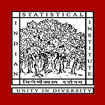Evidence for long-timescale (>103 years) changes in hydrothermal activity induced by seismic events
Document Type
Book Chapter
Publication Title
Crustal Permeability
Abstract
The hydrologic response to seismic waves is thought to be due to either deep-seated fracture closure/dilation or shallower crustal permeability changes. This chapter considers seismicity-induced fault-permeability changes and their effects on hot-spring/geyser isotopic composition over timescales of 103 years within the Beowawe geothermal system, Nevada, USA. In order to interpret the stable-isotope history of the sinter deposit and the present-day temperature trends, the chapter also considers a relatively simple, cross-sectional, single-phase hydrothermal model of the Beowawe geothermal system. In this model, permeability is instantaneously increased along the Muleshoe and Malpais fault zones to create a single-pass hydrothermal system. The pollen 14C age and oxygen isotopic composition of siliceous sinter deposits from the former Beowawe geyser field reveal evidence of two hydrothermal discharge events that followed relatively low-magnitude (
First Page
260
Last Page
274
DOI
10.1002/9781119166573.ch21
Publication Date
10-31-2016
Recommended Citation
Howald, Trevor; Person, Mark; Campbell, Andrew; Lueth, Virgil; Hofstra, Albert; Sweetkind, Donald; Gable, Carl W.; Banerjee, Amlan; Luijendijk, Elco; Crossey, Laura; Karlstrom, Karl; Kelley, Shari; and Phillips, Fred M., "Evidence for long-timescale (>103 years) changes in hydrothermal activity induced by seismic events" (2016). Book Chapters. 232.
https://digitalcommons.isical.ac.in/book-chapters/232

